Which Wire Rope is best for your Project?
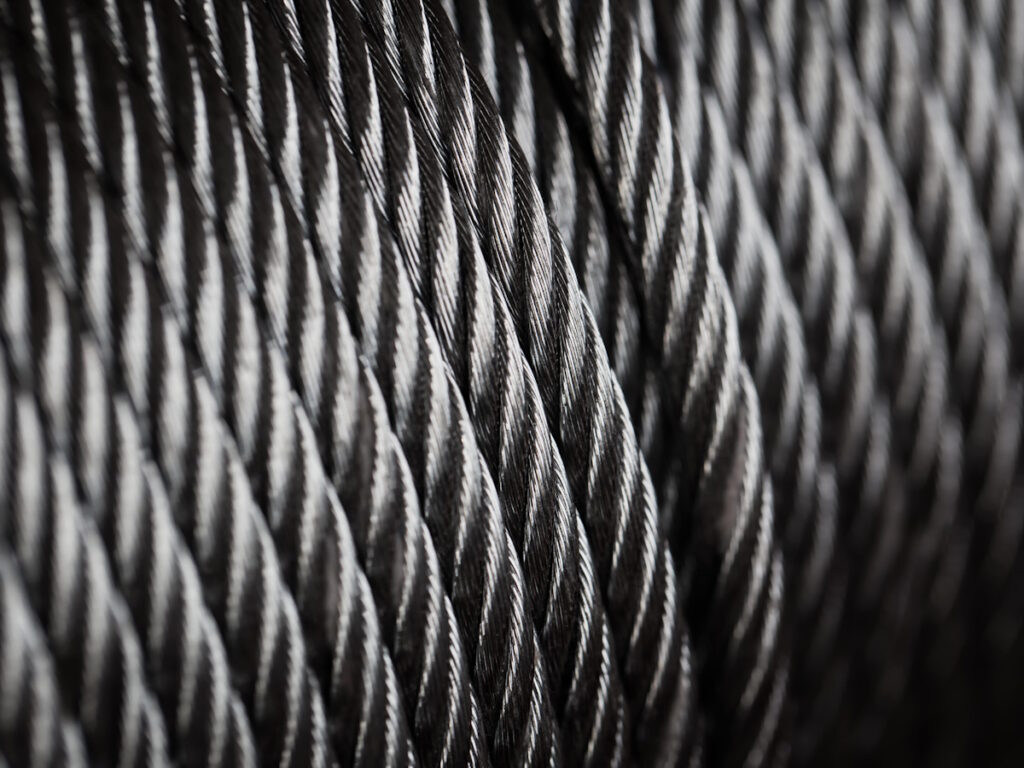
A number of different types of wire rope (also known as aircraft cables) are currently on the market, which might make it difficult for you to decide on the option that’s best for your construction project. Wire rope uses include its original applications in the aerospace industry to hoisting cranes. This has forced engineers to develop numerous sizes and styles, which in turn has helped to further over complicate things.
Fortunately, you’ll be in a better position to make the right choice once you know a few pieces of insider information. Perhaps the most important thing to know before making a purchasing decision is how to rate the various types of wire rope by their classification.
Browse Our Selection of Wire Rope
Comparing 1×19, 7×7 & 7×19 Wire Rope Designs
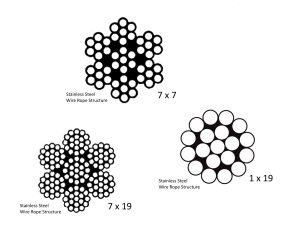
Wire rope specifications usually classify a piece of cable by the number of wires in each strand as well as the number of strands in the whole rope. This has lead to a system where cables are identified by a pair of numbers, such as 7×19. The first number, 7 in this case, represents the total number of strands in the rope. If you unravel a 7×19 cable, then you’d be able to see 19 wires in each individual strand.
While the second number does technically represent the number of wires in each of these strands, it might be more accurate to say that it identifies a class or range of values and isn’t an exact measurement.
Even though this might sound confusing, there isn’t much you’ll have to remember when shopping for wire rope. All cables of the same size, grade and core offers the similar breaking strength characteristics. They also exhibit a similar weight per each foot of cable.
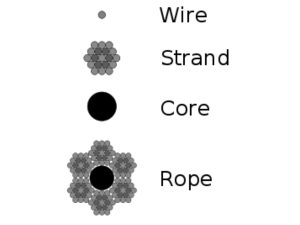
Three of the more common classifications you’re likely to come into contact with are 1×19, 7×7 and 7×19. A 1×19 construction gives engineers the freedom to design a stiff cable that won’t flex or bend, so you might find it anywhere you have to run ropes in a straight line such as when putting up guy wire. And go here if you want to know more about OTHER structural classifications.
Construction crews that have to deal with rigging or want to tow and maneu
ver heavy objects often turn to 7×7 cables. Heavy applications might call for 7×19 rope, which can handle a healthy amount of force before it breaks. Overall, 7×7 is used when flexible pieces are required and 7×19 is employed when an even greater level of flexibility is preferred. If you have to make slight bends, then 7×7 ropes may be preferred. Mechanical assemblies that call for sheaves and pulleys work well with 7×19 pieces. And please note that 7×19 is NOT like 19×7… which is explained here.
Construction & Stiffness & Stretch
Since stiffness is such an important consideration when selecting a piece of wire rope, technicians have developed more than one way of measuring it. In most cases, you’ll see people talk about axial and bending stiffness. Stretch is a whole different world – and if that is relevant to your project, please find an engineer.
Axial stiffness measures the elastic deformation of a piece of wire rope under load. It’s normally expressed as a ratio of load to deflection. Since the relationship between these two things aren’t linear, most manufacturers are only ever able to apply guidelines values. As a rule, though, tightly wound wires with many strands won’t experience as much axial gyration as weaker ropes.
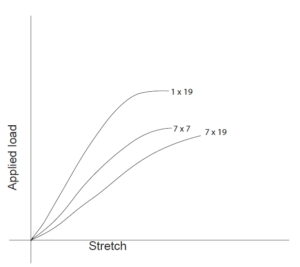
Bending stiffness is perhaps more self-explanatory. This metric tracks how likely a particular type of wire rope is to start to sag when put under a load. In most strands that feature multiple layers of wires, the inner layers will start to support the outer layers once a load gets applied. This allows all of the wires to slide and adjust freely to provide additional support against these bending forces.
There’s a general rule of thumb that you might want to follow when trying to decide between different types of wire rope. Those that feature strands made up of a few large wires tend to be more resistant to abrasion but less resistant to fatigue. Pieces of wire rope that use strands made up of many smaller wires tend to suffer more from abrasion but stand up well against fatigue.
Wire Rope Cable Applications
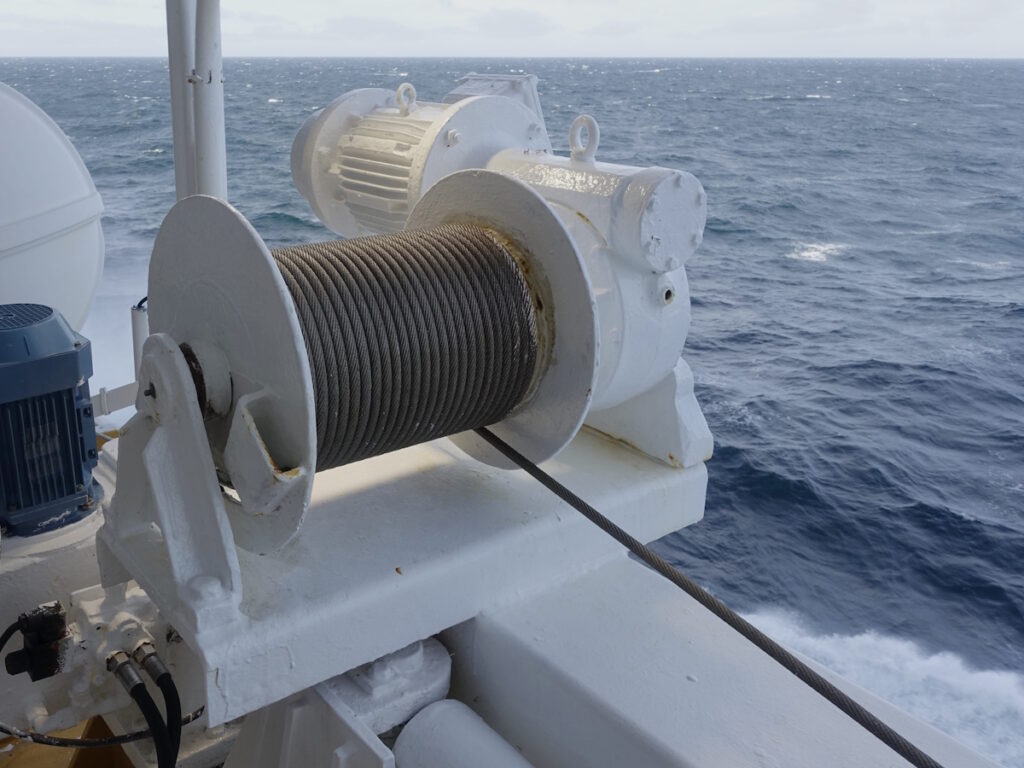
Considering that different applications require different types of cable, you’ll want to think carefully about your company’s particular use case. While fly-by-wire technology has allowed many pilots to use electronic controls, smaller aircraft often still rely on good strong wire ropes.
Nautical uses for wire rope include securing cargo to the decks of ships and securing boats to their moorings. Sailboat rigging and lines going to and from fishing boats are often made from wire rope as well. Most maritime companies prefer to go with wire rope that won’t corrode when exposed to salt water. And here both Galvanised Wire Rope Grades and Stainless Steel Wire Rope Grades are important considertions.
Even if you’re used to seeing wire rope around the job site, there are a number of applications you might not have thought of.  For instance, a majority of live theaters feature backdrops that move. Galvanized cable fits the bill in these cases. Recreational zip lines are generally made from wire rope as well, because it’s sturdy enough to handle the elements.
For instance, a majority of live theaters feature backdrops that move. Galvanized cable fits the bill in these cases. Recreational zip lines are generally made from wire rope as well, because it’s sturdy enough to handle the elements.
Pay close attention the next time you’re working out in the gym, because you’ll see wire ropes there too. They’re often used to rig weight machines. Some companies have even developed novel designs that use strong coated wire ropes to provide resistance for workout warriors.
Engineers are constantly looking for new solutions to problems, so you can expect to see additional wire rope uses in the future. Depending on how you intend to use them, though, you might need wire ropes made from a specific type of material.
Galvanized vs. Stainless Steel Wire Rope
Many wire rope applications expose the metal to harsh conditions. Galvanized steel wire rope features a layer of compressed zinc to help reduce the risk of corrosion. While they’re still not suitable for marine use, they should stand up to quite a bit of abuse. Choosing a higer grade increases both strength and reistance to corrosion – in fact G2070 is considered Marine Grade Galvanised Wire Rope
If you plan to install cable anywhere that it could be exposed to salt water spray or other forms of moisture, then you’ll want to go with stainless steel wire ropes, such as these. While they cost more, they’re made of genuine 304 or 316 steel. This helps them stand up against the corrosive influence of seawater.
Nylon, Vinyl & Bare Wire Ropes
Nylon coated ropes can hold up well in high-friction applications that generate a fair amount of heat. Since the exterior coating protects the inner cable from fraying, these designs are perfect for conveyor belts and push-push control actuators. Smaller diameter nylon ropes are often used on exercise machines for this reason.
Vinyl (PVC) coatings are often applied in the form of a poly vinyl chloride sheath. PVC-coated cables are more resilient to the kind of damage done by sunlight and water. Construction sites and mines often opt for bright vinyl coatings to increase visibility for safety reasons – like our Red Coated Galvanised Wire Rope.
Some wire rope applications don’t require anything special on the exterior. Cost-conscious technicians often specify bare aircraft cable whenever it’s safe to do so in order to save a little cash. You can find a nice selection of quality coated and uncoated wire rope here.
Strengths, Loads & Capacities of Wire Rope
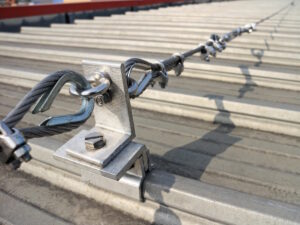 You’ll likely see two different ways to measure the breaking strength of wire rope. Minimum breaking strength (MBS) refers to the smallest load that will pull a piece of wire rope apart. Aggregate strength refers to the collective breaking strength of all of the wires in a single cable when a manufacturer tests them individually.
You’ll likely see two different ways to measure the breaking strength of wire rope. Minimum breaking strength (MBS) refers to the smallest load that will pull a piece of wire rope apart. Aggregate strength refers to the collective breaking strength of all of the wires in a single cable when a manufacturer tests them individually.
An overwhelming majority of suppliers define tensile failures a bit differently than users might. When suppliers run wire rope capacity tests, they consider the slightest problem to be a failure and thus will rate the rope for whatever value they found caused the issue. On a work site, technicians might not normally consider a small problem to constitute failure.
That being said, don’t test your luck and don’t overload your cables. Hardware vendors are cautious for a reason. You must always stay within the working load limit. It’s easy to calculate wire rope capacity, so you’ll never be without guidelines.
Safe Working Load is related to the Working Load Limit (WLL) This should be determined by an Engineer based on the risk profile of the application – however if in doubt, then divide the tensile strength by 5 (or more). This is the design safety factor (typically 5, but determined the engineer designing the use of the wire rope).
The number you get is the maximum working load or Working Load Limit WLL. This is the load that you can apply without risking tensile failure or metal fatigue. This value is often expressed in kgf (Kilograms Force) or kN (kilo Newtons).
While wire rope is noted for its high tensile strength, you don’t want to continuously load a piece close to capacity. As a general rule, you shouldn’t ever exceed the working load limit (WLL) you have calculated for your wire on your project. Regardless, over time this will eventually wear it out even if you’re not exceeding any of the manufacturer’s printed limitations. A simple wire rope strength chart can help you keep a close eye on wire rope strengths if find this to be an issue:
All ropes of the same size, grade and core offer somewhat similar minimum breaking force characteristics and weight per foot, though they do differ depending on the construction type and materials used. That makes a wire rope guide useful even if you only know the diameter of the aircraft cable you’re working with.
Consulting a Wire Rope Guide
Finding the maximum /achievable safe load for slings of all sorts in certain esoteric applications or configurations is extremely important, which is why you’ll find specific guides made just for this reason. Riggers use them all the time and its a fast way to access ‘answers’ that would otherwise require exercising your High School Triginometry. Consider the following wire rope capacity chart if you find yourself dealing with any installation that’s perhaps a little unusual: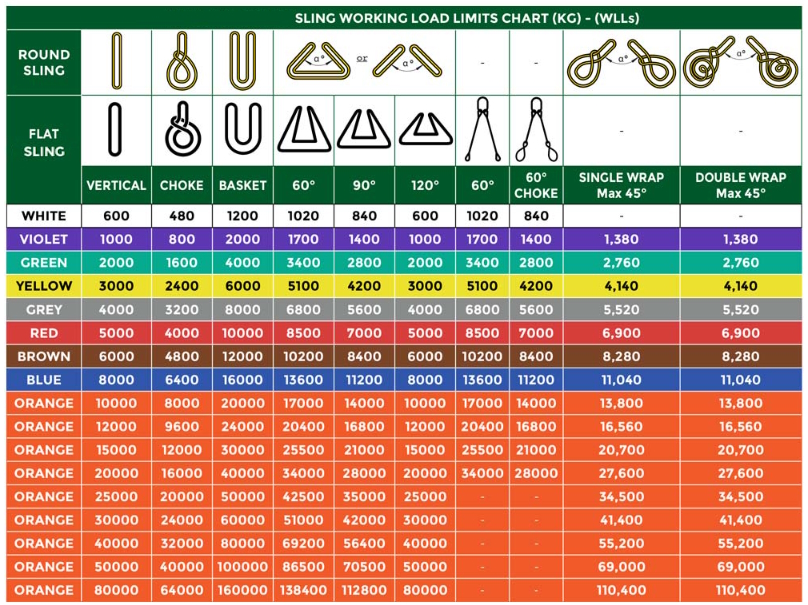
Choosing the Right Wire Cable for Your Job Site
Wire rope is a complex piece of device. Few people ever stop to consider how each piece of wire rope is a machine unto itself. Remember to think about how strong and flexible you need your new cable to be and consider whether it’ll get exposed to harsh conditions or have to weather the elements. You’ll be rewarded by your research with a piece of cable that works as hard as you do.
At Low Cost Wire Pty Ltd we offer many different kinds of wire rope. All our products are known for their high quality and very competitive prices. With decades of experience, we’re trusted for dependability, safeness, innovation, and unmatched customer support.